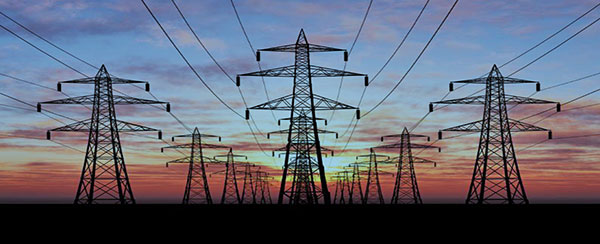|
|
|
June 2004 from Whale Website
Today I am homeless.
My money does not
provide me shelter. My good health does not ensure my survival. My
friends are unable to help me. I am being killed, but the law offers
me no protection.
For several months I had been having headaches and difficulty concentrating and remembering things. Then, while on a surgery rotation, I suffered crippling pains in my hips, making it difficult to assist in operations. My heart rate slowed to less than 50.
One day I collapsed and was unable to get up.
My chest hurt, and I could not get enough breath. I was sure I was having a heart attack. During the next two weeks I lost 15 pounds. And I was a slim man to begin with. It wasn't a heart attack, but it was still six months before I could walk up a flight of stairs without becoming short of breath.
It was three years before I was strong enough to ski again. It was seven years before I met someone who validated my own experience that being near certain electrical appliances, such as television sets and computers, made me ill, and that staying away from them kept me healthy.
However, having discovered how to remain
healthy, I gradually found that I was being effectively disabled by
my society.
I learned that electro-cautery machines, used in every modern surgical operation to cut through tissue and to stop bleeding, expose surgeons to much higher levels of radio frequency radiation than is permitted for workers in any industry. I learned that there was a disease thoroughly described in the Russian and Eastern European medical literature called radio-wave sickness, the existence of which was usually denied by western authorities.
This description made me remember my 'unknown illness', the one that had derailed my medical career.
Bradycardia, or a slow heart rate, was
said, in these texts, to be a grave sign.
But in July 1996, to my dismay, I
learned that an innovation was coming to my city, which threatened
to make it impossible to avoid exposure any more.
In 1996, the telecommunications industry began a marketing campaign designed to change all that.
For Christmas that year, all over the
country, digital cell phones were going to be on a lot of shopping
lists. And to make them more practical, tens of thousands of
antennae were going to be erected on towers, buildings, church
steeples and lampposts all over the country before Christmas, and
hundreds of thousands more during the next few years.
But on November 14, 1996, Omnipoint, New York City's first digital cellular provider, did open for business, broadcasting from thousands of antennae newly erected on the rooftops of apartment buildings. According to the health authorities, an early flu hit New York City - but not Boston, and not Philadelphia - on about 15 November.
The flu was severe and ran a prolonged
course, often dragging on for months instead of the usual two weeks.
It read:
And we did hear from them.
Hundreds called, men, women, whites,
blacks, Asians, Latinos, doctors, lawyers, teachers, stockbrokers,
airline stewards, computer operators. Most had woken up suddenly in
mid-November, thinking they were having a stroke or a heart attack
or a nervous breakdown, and were relieved to know they were not
alone and not crazy.
I published both the raw data and the
complete analysis, with graphs. This appeared in No Place To Hide,
an investigative journal published by my organization and I am
presently working with scientists in Europe to expand this study to
other countries.
I also learned that the FCC had just issued regulations setting public exposure limits for microwave radiation at levels at least ten thousand times higher than levels which, according to the Environmental Protection Agency (EPA), were causing reports of illness from all over the world.
Levels that are at least ten thousand
times higher than the levels that had forced me to leave behind my
home, my family, and my friends, and to run for my life, never to be
able to return home again.
But in January 2001, the Supreme Court,
without comment, declined.
Quite the contrary:
It is harder to show effects today than 10 years ago because now the entire planet is exposed, making it impossible to do experiments with 'unexposed' controls.
But most experiments still show effects anyway - effects on heart rhythms, on brain waves, on the blood-brain barrier, on sleep, on the eyes, on the gonads, on the skin, on hearing, on calcium, on melatonin, on glucose, on metabolism, on human well-being. If you look, you will find.
Zorach Glaser reviewed over 5,000
such studies for the United States Navy during the 1970s alone.
After 1982, the United States ceased funding Glaser's cataloguing
work. But the flood of alarming research occurring all over the
world continued.
Ophthalmologist Milton Zaret was the first to describe cataracts caused by low-energy microwaves.
Canadians Tanner, Romero-Sierra and Bigu Del Blanco worked with parakeets, chickens, pigeons and seagulls. Birds avoided microwave fields if they could, and collapsed within seconds if they couldn't. Defeathered birds showed no such distress, and these researchers then showed that feathers act as antennae conveying microwave energy to the birds.
Thirty years later, Alfonso Balmori Martínez has carefully documented the decline and disappearance of white storks, house sparrows, and free-tailed bats from the vicinity of cellular phone base stations. The idea that there is an exposure threshold, below which microwave radiation can be considered safe, has been disproven many times over.
In Moscow, Igor Belyaev has found resonance effects on bacterial DNA that occur at exposure levels 10,000,000,000,000,000 times less than the average exposure from a cell phone.
W. Grundler, in Germany, has
found effects on the growth of yeast cells, also at near-zero levels
of exposure.
Teams of researchers found such effects
wherever they looked, even at extremely low levels of exposure:
smaller growth rings in trees, premature ageing in pine needles,
chromosome damage in cows, decreased memory, attention, learning,
and pulmonary function in school children, increased white blood
cells in adults, and an altered sex ratio (more girls) in children
born during the years of the radar's operation.
Wolfgang Löscher and Günther Käs
documented illness in dairy cows caused by cell towers. This
included decreased milk production, infertility, abortions, birth
deformities, behavioral problems and early death. Autopsies revealed
that the cows died of acute circulatory collapse and bleeding from
several organs.
Claudio Gómez-Perretta has obtained
similar results in Spain. The Dutch government sponsored double
blind experiments in a laboratory. People exposed to a cell tower
signal experienced dizziness, nervousness, chest pain, shortness of
breath, numbness and tingling, weakness, and difficulty
concentrating.
Olle Johansson and Örjan Hallberg showed that the rise and fall of asthma and certain cancers during the 20th century closely paralleled changes in public exposure to radio waves in every country they looked at.
They showed that radio waves are as big a factor in causing lung cancer as cigarette smoking.
Leif Salford's recent work on the blood-brain barrier has verified the earlier work of Allan Frey and others, but with additional, ominous findings.
First, sometimes, decreasing the amount of radiation 1,000 times increased the damage to the brain (demonstrating the 'window' effect). Second, animals exposed to a cell phone once for two hours were found to have areas of brain cell death two months later.
Salford has called cell phones 'the world's largest biological experiment ever'.
His work provides solid support for those who warn that every cell phone call damages brain cells, and that cell phones, like cigarettes, harm both users and nearby non-users.
His findings are particularly alarming in light of surveys - by Santini in France, and by Sandström and Mild in Sweden - which include:
The appeal calls for,
The California Department of Health Services has concluded that, on
the basis of a telephone survey, 120,000 Californians - and by
implication one million Americans - have left their jobs because of
electromagnetic pollution in the workplace. The people who have left
their homes for such a reason are not being counted by anyone.
The problem is much more widespread than
is commonly assumed, and growing daily. By the time people realize
that electromagnetic fields are directly causing their pain or
illness, their lives are often already ruined. They find that
reliable information is hard to come by and harder to understand;
that there is little support for them, and no solutions offered; and
that when they finally learn what they have to avoid, it is
nevertheless impossible to do so.
Yet even so public a figure on the world
stage has been unable to draw the world's attention to our
collective plight, or in any way slow down the growth of
telecommunications, or even to put it on the map as an environmental
issue.
Even radio astronomers are seriously
talking about the far side of the moon as the only place left that
is quiet enough, in the radio spectrum, to still be able to see the
stars.
|


